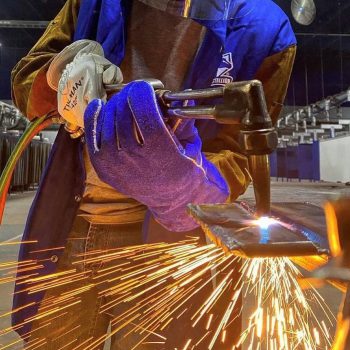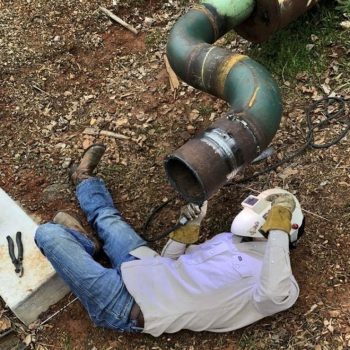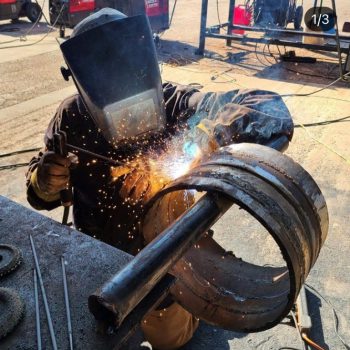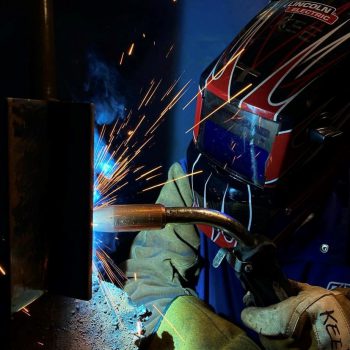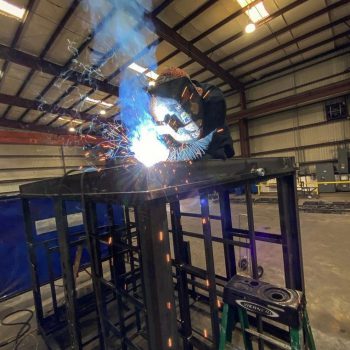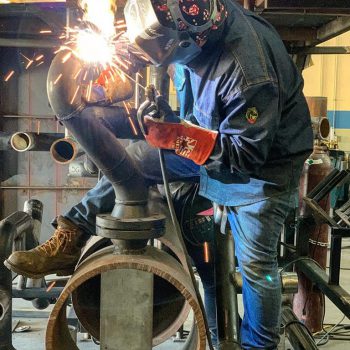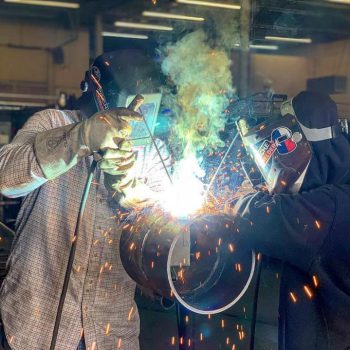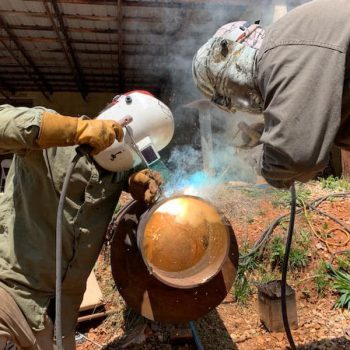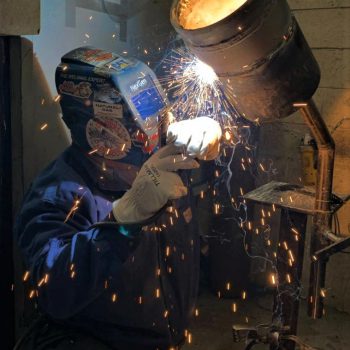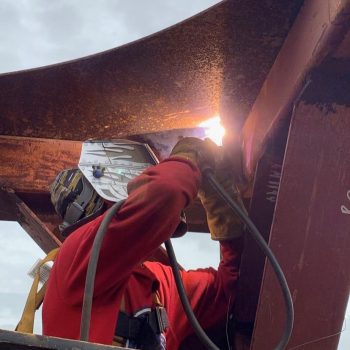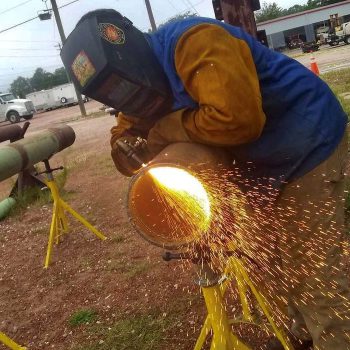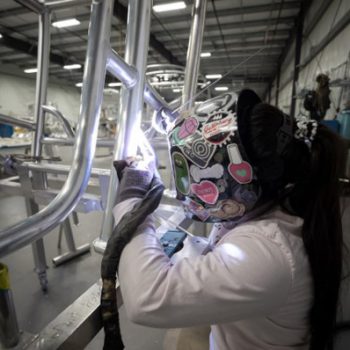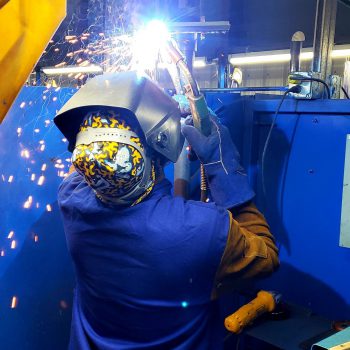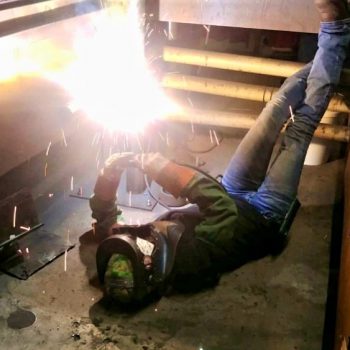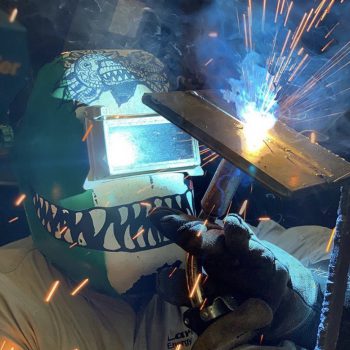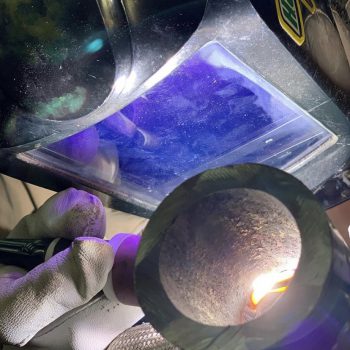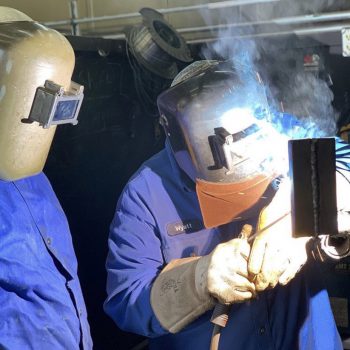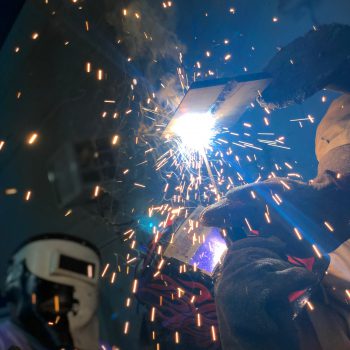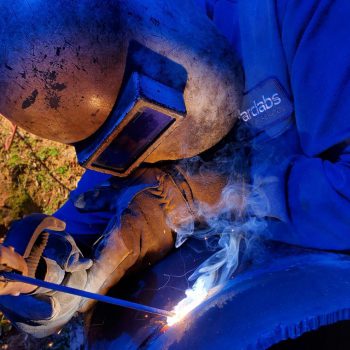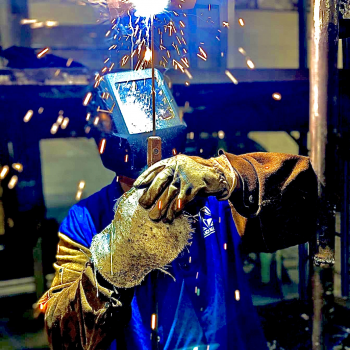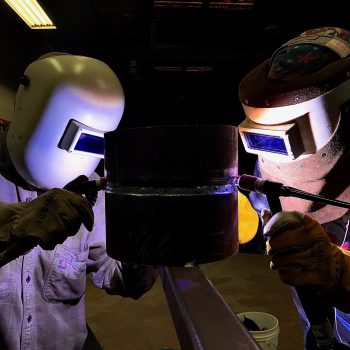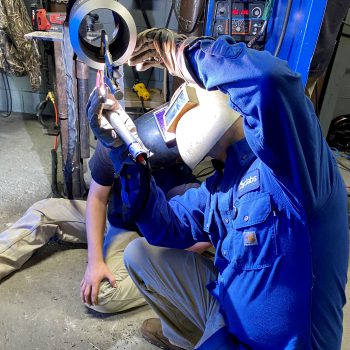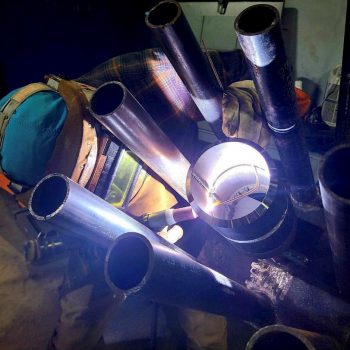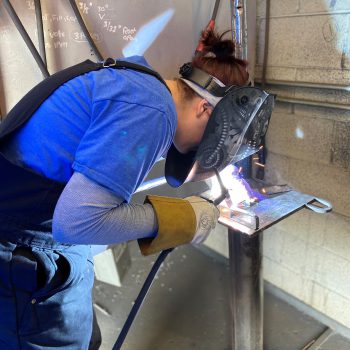Why do I need to use AC when TIG welding aluminum?
TIG welding aluminum is kind of like welding an M&M: you have to break through a hard shell to get to the soft inside, and too much heat results in a gooey mess.
What we see as a singular metal is actually two substances: aluminum and aluminum oxide. When exposed to air, aluminum instantly begins forming a surface layer of aluminum oxide that gets thicker over time. That white dust on an old screen door? It’s aluminum oxide.
The challenge is that where aluminum melts at about 1,221 oF (the exact temperature depends on the alloy), aluminum oxide melts at about 3,762 oF — that’s a difference of about 2,500 oF!
Now, if you recall from our polarity blog, TIG welding ferrous metals uses Direct Current Electrode Negative. With DCEN, current flows from the negatively charged tungsten electrode to the positive charged workpiece. If you try to weld aluminum using DCEN, you have to crank up the amperage to melt oxide layer. By the time the current can have a real affect on the base metal, there’s so much heat that you’ll totally lose control of the puddle. Further, aluminum oxide particles can contaminate a weld, so trying to TIG weld aluminum with the same process you use to weld steel is a losing tactic.
MIG welding doesn’t have these problems because it uses DCEP. With the current flowing from the base metal to the wire electrode, the process provides a natural “cleaning action” that blasts off the aluminum oxide.
At this point, you probably see where we’re going: AC TIG offers the best of both worlds. As the current alternates, the DCEP portion of the AC waveform provides cleaning, while the DCEN portion of the cycle provides penetration.
Depending on the specific model, TIG welders with an AC output have a variety of controls over the current. At Arclabs, we’ll teach you how to adjust those controls and learn how to control the aluminum weld puddle. For some reason — maybe it’s because welders love a challenge — most people want to jump straight to TIG welding aluminum. That’s a recipe for frustration. Focus on learning your TIG mechanics on steel first. When you’re ready to step up to aluminum, we’ll be there to teach you.
For more welding knowledge
[wpu_silo links=’35’]
 877-647-4111
877-647-4111
